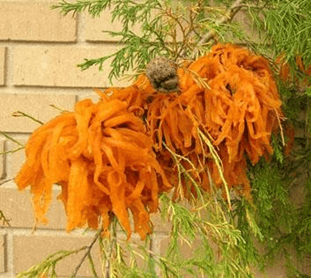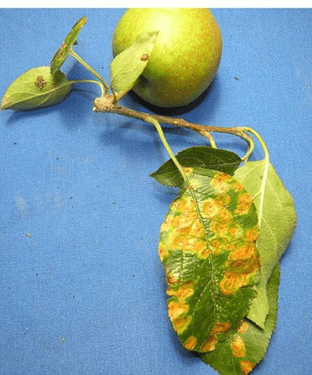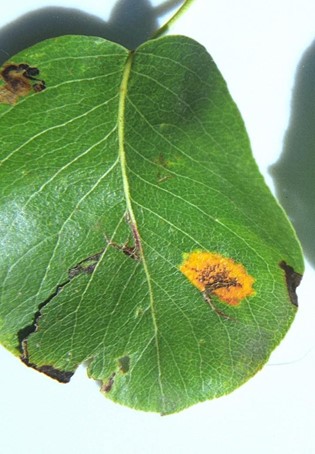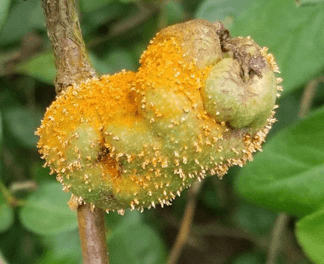Cedar Apple Rust 2023
Contact
Sherrie Smith
Plant Diagnostician
Phone: (479) 575-2727
Email: ssmith@uada.edu
Jason Pavel
Diagnostician
Phone: (479) 575-7257
Email: jpavel@uada.edu
Office:
University of Arkansas System Division of Agriculture
Cralley Warren Building
Room 16
2601 N. Young Ave.
Fayetteville, AR 72704
Cedar Apple Rust 2023
by Sherrie Smith and Jason Pavel - March 7, 2023
Plant Health Clinic Disease Note: Issue 3

Juniper Cedar Apple Rust Telial horns – Gymnosporangium juniperi- virginianae
Photo by Rick Cartwright, University of Arkansas Cooperative Extension
There are many species of rust that attack pear and apple trees. Most require juniper species as an alternate host. These rusts also attack hawthorn, quince, mountain ash, and other rosaceous species. Cedar Apple rust is the most economically important rust seen east of the Rocky Mountains. It can cause serious yield loss and almost total defoliation in susceptible cultivars.
Galls on cedar trees exude bright orange tentacles during wet weather in the spring. The tentacles, (telial horns), become swollen and jelly-like during rains and produce teliospores. Pears do not get Cedar Apple Rust but get rust from other species of Gymnosporangium. With all species of Gymnosporangium teliospores produce basidiospores which infect nearby apples and other members of that family. Orange-brown lesions, pycnidia, appear on the upper side of pear or apple leaves a few weeks after infection. One to two months after the appearance of the lesions on the upper leaves, aecia develop on the underside. The spores from the aecia infect nearby cedars and junipers and begin the cycle over again.
What are the symptoms of cedar apple rust?
First symptoms are yellow to orange-red spots on the upper sides of the leaves and on fruit. Leaves 4-8 days old are the most susceptible, and fruit is the most susceptible from the tight cluster stage until just after petal fall.

Cedar Apple Rust on Apple –
Gymnosporangium juniperi-virginianae
Photo by Sherrie Smith, University of Arkansas System Cooperative Extension

Cedar Quince Rust aecia on Pear –
Gymnosporangium clavipes
Photo by University of Arkansas System Cooperative Extension
How do I treat cedar apple rust?
Fungicides such as Captan should be used at pink bud stage on susceptible ornamental and fruit trees until 30 days after petal fall. Removal of wild cedars within a ½ to 1 mile radius of orchards breaks the cycle. Galls should be pruned out of landscape junipers during the dormant season. It is helpful to plant rust resistant fruit trees.

Cedar Quince Rust on Pear – Gymnosporangium clavipes
Photo by Jennifer Caraway, University of Arkansas Cooperative Extension
This work is supported by the Crop Protection and Pest Management Program [grant no. 2017-70006- 27279/project accession no. 1013890] from the USDA National Institute of Food and Agriculture.